The First Case in Canada! Professor Wang Yan from Xiamen Cardiovascular Hospital Joins Forces with K-Clip® to Build a new Chapter in Sino-Canadian Tricuspid Vavle Repair Technology Exchange!
20 November,2024
K-Clip® Achieves Another Milestone! On October 31, 2024, Vancouver time, at the invitation of Professor Anson Cheung, Director of the Cardiac Surgery Department at St. Paul’s Hospital and Vancouver General Hospital, Professor Wang Yan successfully guided Professor Cheung’s team in completing Canada’s first K-Clip® transcatheter tricuspid valve annulus repair. The patient's regurgitation was reduced from severe to minimal after anesthesia, and the results were unanimously praised by colleagues on-site: "Great results, great device, and great team!"
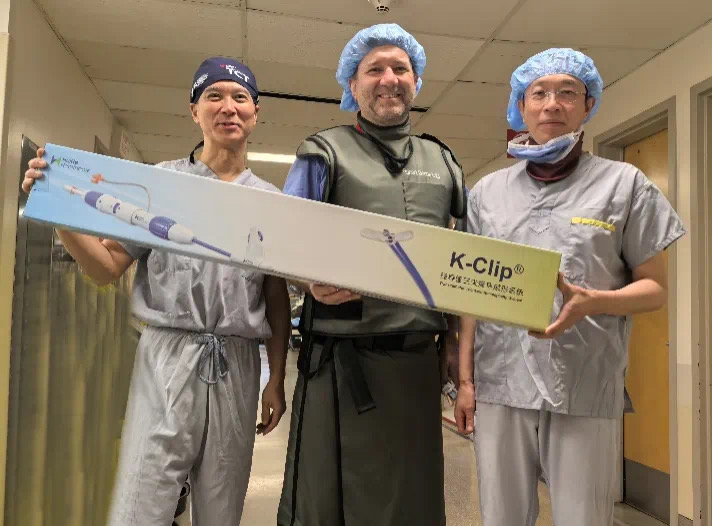
The patient was discharged the next morning, with an echocardiogram showing only 0-1+ (minimal) tricuspid regurgitation.
“Tale of Two Cities”: China – Xiamen
The seeds of Sino-Canadian friendship were quietly sown a week earlier during the CMC conference, when Professor Anson Cheung visited Xiamen Cardiovascular Hospital to learn about K-Clip® transcatheter tricuspid annuloplasty. This laid the foundation for the successful implementation of K-Clip® clinical applications in Canada. Professor Wang Yan’s team demonstrated a K-Clip® transcatheter tricuspid annuloplasty on a patient with multiple-valve disease, achieving excellent results. The patient’s regurgitation decreased from severe to mild after the procedure.
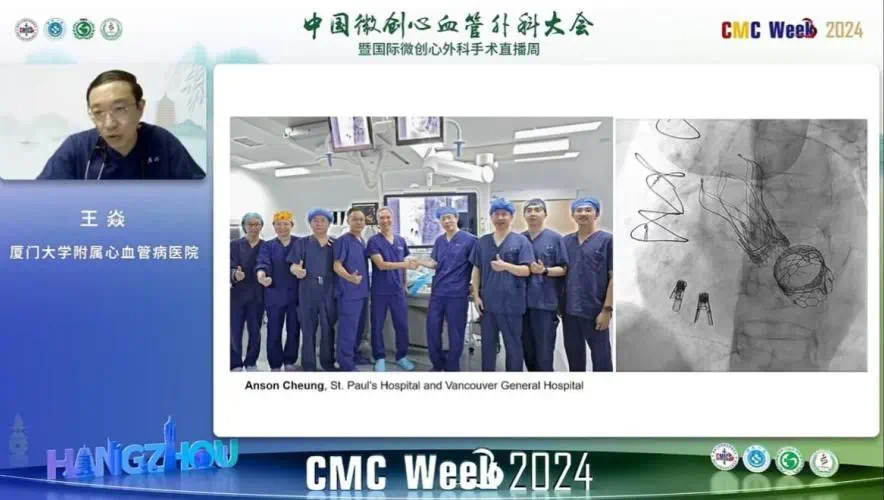
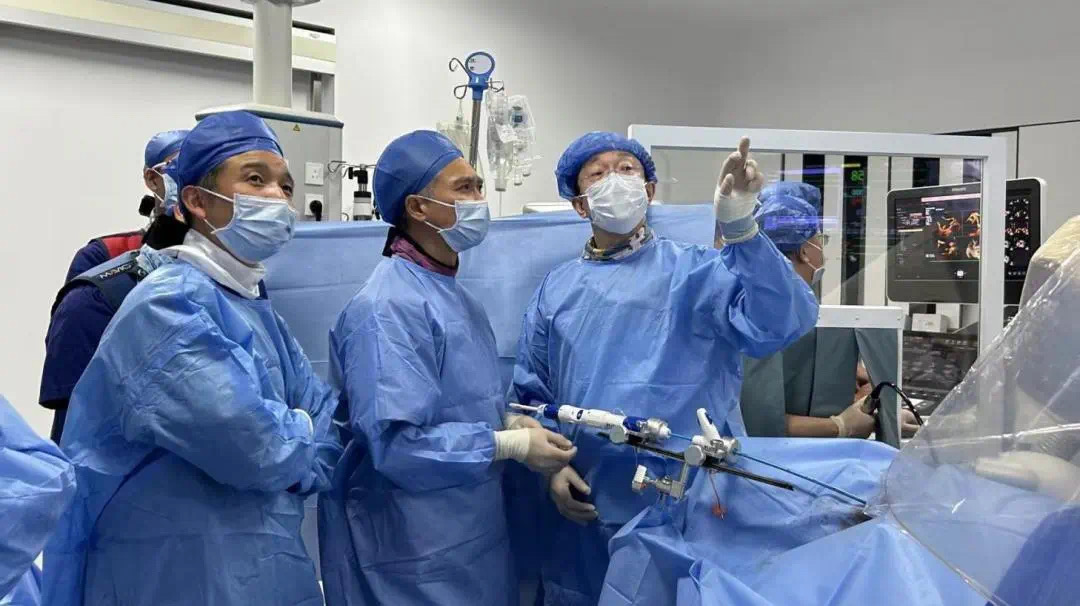
Professor Wang Yan explains key imaging points during K-Clip® procedures to Professor Anson Cheung
“Tale of Two Cities”: Canada – Vancouver
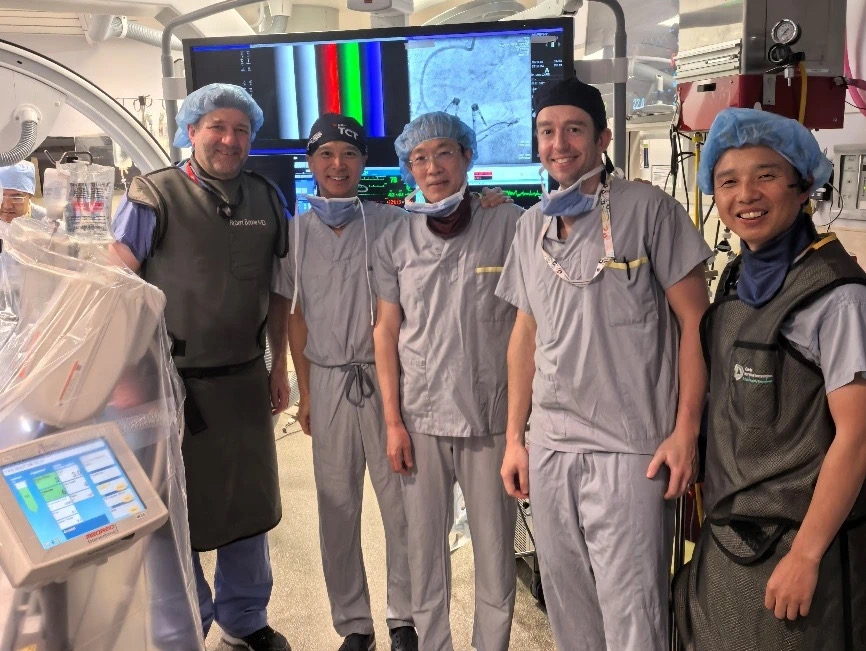
For the case carried out in Canada on October 31, Professor Anson Cheung and Wang Yan held a detailed case discussion and strategy planning session.
Professor Anson Cheung: The patient is a 76-year-old female with severe tricuspid regurgitation (Massive), NYHA Class III, complicated by atrial fibrillation, coronary artery disease, and other comorbidities. She has a history of atrial septal defect repair, stroke, and pulmonary embolism. Her TriScore is 5, STS is 14%, indicating high surgical risk. Esophageal echocardiography shows functional tricuspid regurgitation primarily due to annular dilation.
Based on the patient's age, inability to tolerate surgery, and the annular measurements, they decided to proceed with K-Clip® transcatheter tricuspid annuloplasty.
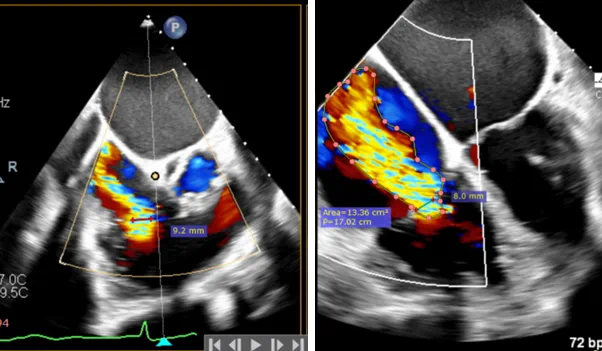
Preoperative baseline TEE showing the maximum regurgitation area
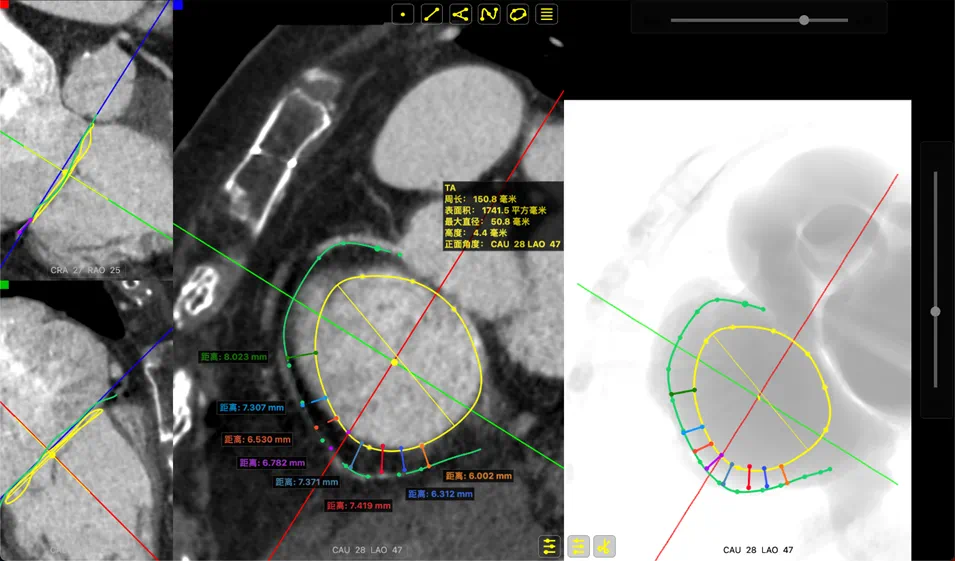
CTA assessment of the right coronary and tricuspid annular distance
Professor Wang Yan: The esophageal echocardiography indicated functional tricuspid regurgitation, primarily concentrated at the central and posterior septal areas. Based on experience, this is considered a "Green zone" patient for K-Clip® treatment. Given the annular area shown on the CTA, two medium-sized K-Clip® devices would provide optimal results. I recommend placing the first K-Clip® at the posterior-septal annulus and the second one at the free edge, specifically at the A-P junction, to further reduce the annular size and improve the coaptation of the anterior and septal leaflets.
The preoperative strategy was executed as planned. Under Professor Wang Yan’s guidance, Professor Anson Cheung successfully deployed two 14T K-Clip® devices at the posterior-septal and anterior-posterior valve rings, reducing the regurgitation area from 16 cm² to 8 cm². The tricuspid regurgitation dropped from severe (4+) to minimal (0-1+).
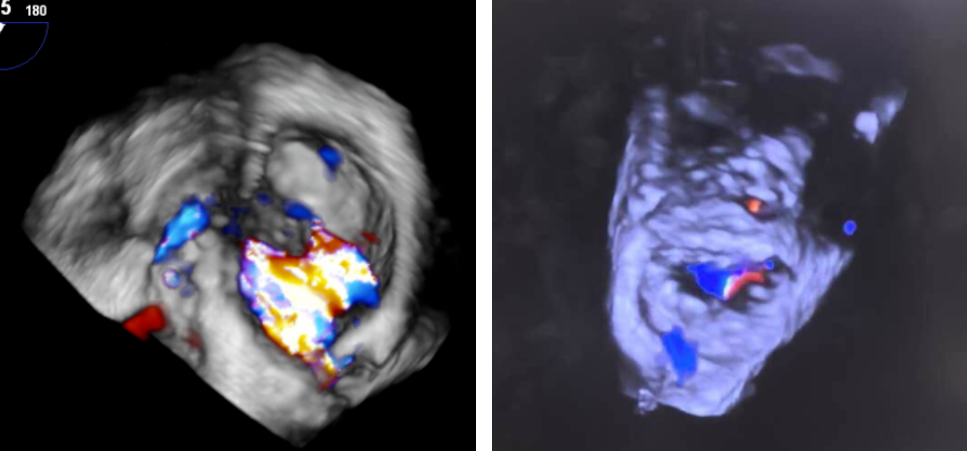
Comparison of preoperative (left) and postoperative (right) regurgitation from the 3D color surgical perspective
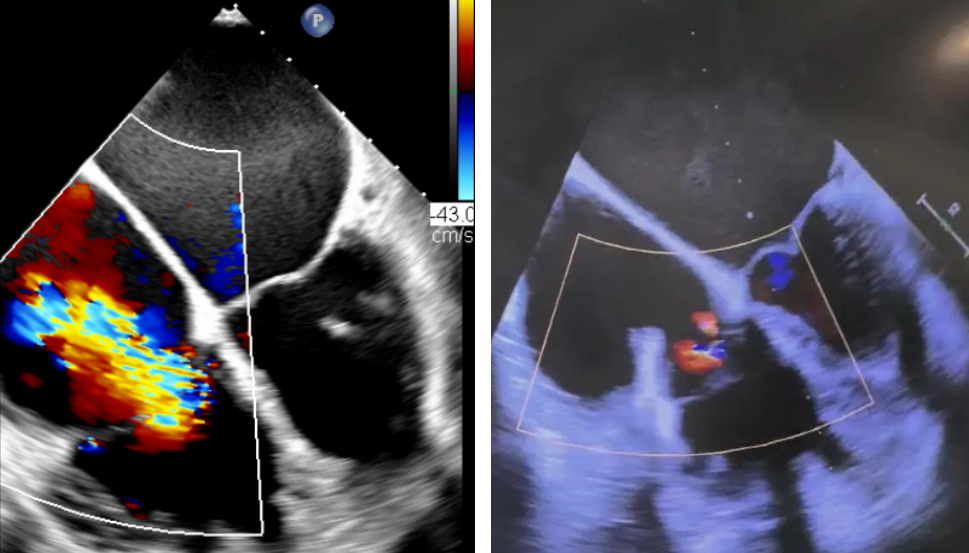
Comparison of preoperative (left) and postoperative (right) maximum regurgitation area in 2D echocardiography
According to the latest reports, the patient was discharged the next morning, with an echocardiogram showing only 0-1+ (minimal) tricuspid regurgitation. At the time of this writing, the patient is recovering well with no adverse reactions.
After the “Tale of Two Cities”
Xiamen Cardiovascular Hospital has extensive experience in heart valve interventions and is a leading institution in the field. As one of China’s first heart valve intervention centers, the structural heart team led by Professor Wang Yan has contributed to the development of many domestic valve intervention devices and has participated in nationwide multicenter clinical trials for dozens of valve devices, completing several first-in-human implants, both in China and globally. In the field of tricuspid valve interventions, Xiamen Cardiovascular Hospital is one of the clinical centers with the most extensive experience in transcatheter tricuspid valve repair in China.
St. Paul’s Hospital in Vancouver, established in 1984, is one of Vancouver’s leading medical institutions. Its cardiovascular department is internationally renowned, with a top-level transcatheter valve innovation research and clinical center. St. Paul’s was one of the first centers in the world to conduct transcatheter aortic valve replacement (TAVR) clinical research and has participated in the development of leading international mitral valve intervention devices.
This exchange of tricuspid valve repair technology between the two hospitals will lay a solid foundation for the promotion of tricuspid valve repair techniques in both countries and bring new hope to patients with severe tricuspid regurgitation.
share
Latest News
-
01 December,2025
Heart Saplings Blossom| Fellows from India and Indonesia Win Awards at International Academic Conferences with Cases from XMCH
-
03 November,2025
“Made-in-China” Robot Performs Cross-Continental Heart Intervention, Achieving a World First in Remote Operations
-
09 October,2025
Accelerating Technology Export | Xiamen experts conduct academic exchanges and demonstrate domestic IVL procedure in multiple hospitals in Pakistan

